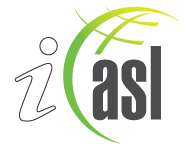

|
|
![]()
Note: IF YOU ARE UNDERTAKING ANY OF THE ACTIVITIES LISTED BELOW, THEY SHOULD BE MODIFIED SO THAT THEY COMPLY WITH THE COVID-19 HEALTH AND SAFETY GUIDELINES/ REGULATIONS IN YOUR SCHOOL.
Creative Writing: Organize creative writing activities for your students…. poetry writing, short story writing, descriptive pieces … To assist and support your students use tools such as writing frames, creative modeling, visual stimulants, etc.
Poetry reading: Hold a poetry reading in the school library/in the classroom where students read poems they have written themselves OR read poems they choose in which the world created by the poet appeals to them
Posters: Invite your students to create posters inspired/imagined by the books they are reading. This also works well for poems your students are reading. A3 size works well for this.
Themed reading assignment: Draw up a list of titles that treat this year’s theme.
Organized Reading Activity: Any reading activity of your choice.
Book Buffet, to encourage the reading of a variety of books…. Here’s a reading activity that would give students an opportunity to read from books other than the genre they usually opt for.
- Choose an area that can accommodate separate reading points for the number of students in your class group. In a school library the number of participants is dictated by the library space and the number of spaced out reading points it can set up.
- Select a number of different genres of books (if you know the reading preferences of your participants, select the kind your participants would not usually opt for).
- Place a book at each reading point.
- Seat each student at a different reading point and invite them to read from the book placed there for a period of uninterrupted time. The reader can start from any point in the book e.g. the opening chapter, any arbitrary point in the book etc. Usually they should read for at least 10 minutes.
- After the reading period is up e.g. 10-15 minutes, the participants move on to the next reading point and repeat the activity.
Book Bingo: another version of a reading activity is to create a bingo card and invite your students to read a type of book. Once they have completed a row, vertically, horizontally, diagonally, etc they receive a reward for it e.g. a book token, a greeting card, a postcard, etc, and if they complete a whole card they receive an appropriate reward e.g. a book poster, a book, etc
- An example of a bingo card would be as follows:
A book set in a fantasy world
| A book that tells the story of a refugee | A non-fiction book. | A book set in a world very different to your own. |
A book first published before 1980. | A book in which one of the main characters is challenged by ill health | A book that has a teenage boy as its main character | A book about a relationship |
A book about an animal | A book set in a country other than your own | A book written by an author whose surname begins with B | A book by an author from outside your own country. |
A book in which the main character/s overcome a challenge. | A book that has less than 100 pages in it. | Any book of your choice other than ones you’ve chosen for the other squares. | A book first published in or since 2018 |
Book displays: Arrange a display of books in your library linked to this year’s theme.
Book Talk: Organize a discussion between students and teacher/school librarian about their favourite books and/or authors.
Share a story/folktale: Invite parents and/or grandparents with different cultural backgrounds to read a folktale from their own culture and to come to the event dresses in their specific national or ethnic costume. A different version of this activity is to invite the adults to read a story in their native (primary) language.
Act Out: Organize senior students to go to primary classes to read and act out a story or selection of stories using props. This can be an interaction with a very imaginative element for both senior students acting out the story and for junior students as audience.
Author/Illustrator Visit: Organize an author visit. Questions from students for the author could be prepared with a focus on this year’s theme e.g. where authors get ideas for their stories from, what inspires them, how they shape and develop those ideas i.e. the process from idea to published book. For illustrators, they could be asked to describe the process from idea to the page with focus on developing the visuals in the book.
Library Scavenger Hunt/Treasure Hunt:
· Hide books, library material, etc. in all areas of the school under supervision of teachers.
· The activity is time-based.
· Form teams.
· Give team leaders a list of prepared clues, a kind of map, to help them find the hidden materials
· The hunt begins and ends in the library.
· To complete the activity, each team’s map, signed by each member, must be handed over.
Storybooks: Storybooks can be as simple or sophisticated as you wish depending on the age range of your participants. Students can create storybooks based on any theme or idea, fiction or non-fiction. For non-fiction they can gather information on a specific topic and create storybooks based on their research. Completed storybooks can be put on display in an exhibition. If groups are participating in any of the partnered ISLM activities, a version of this activity can be done in conjunction with the partner group/school. Students gather information about the partner school’s country, write their stories and made storybooks.
Updated 21 Sept 2020

